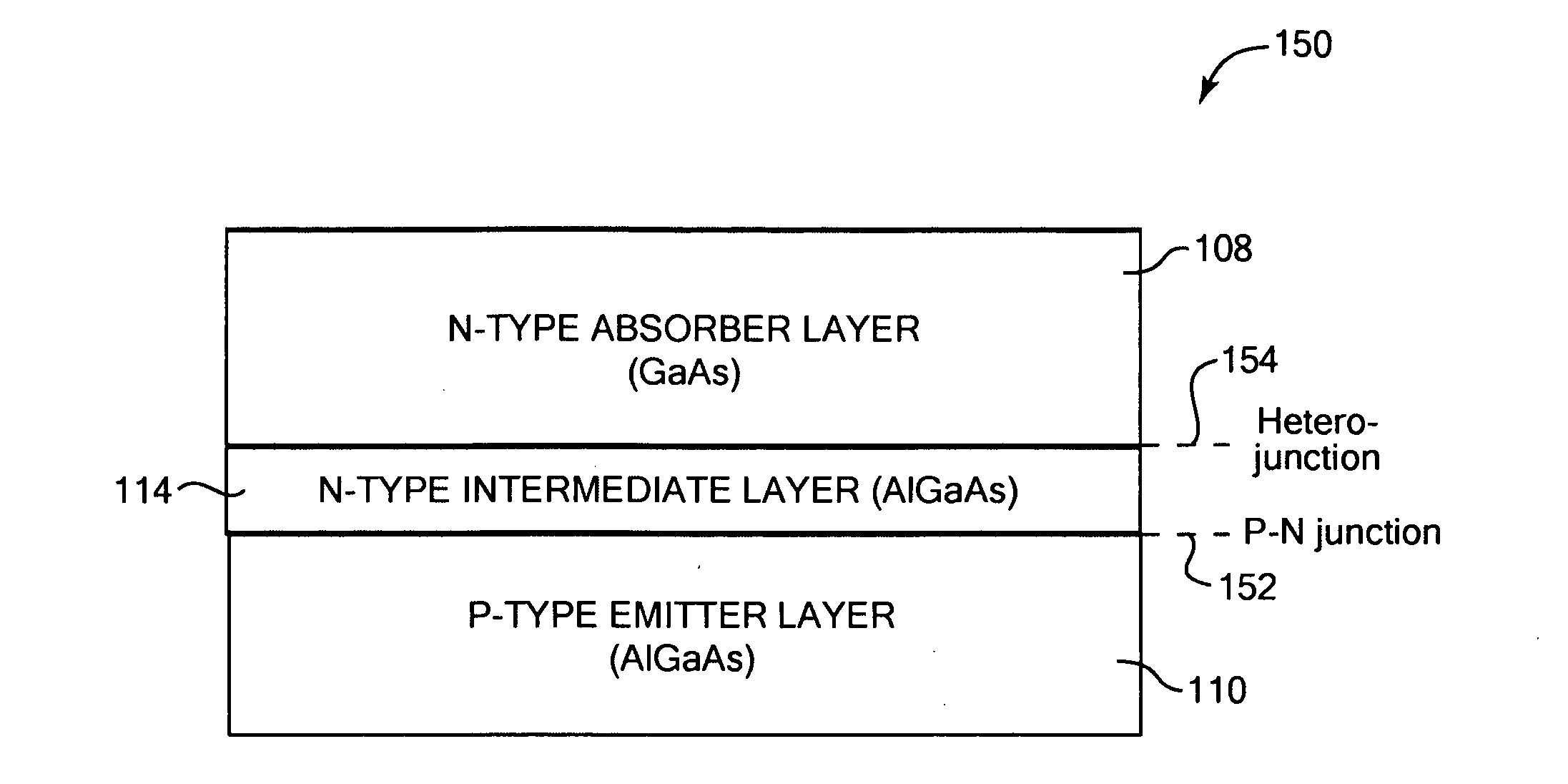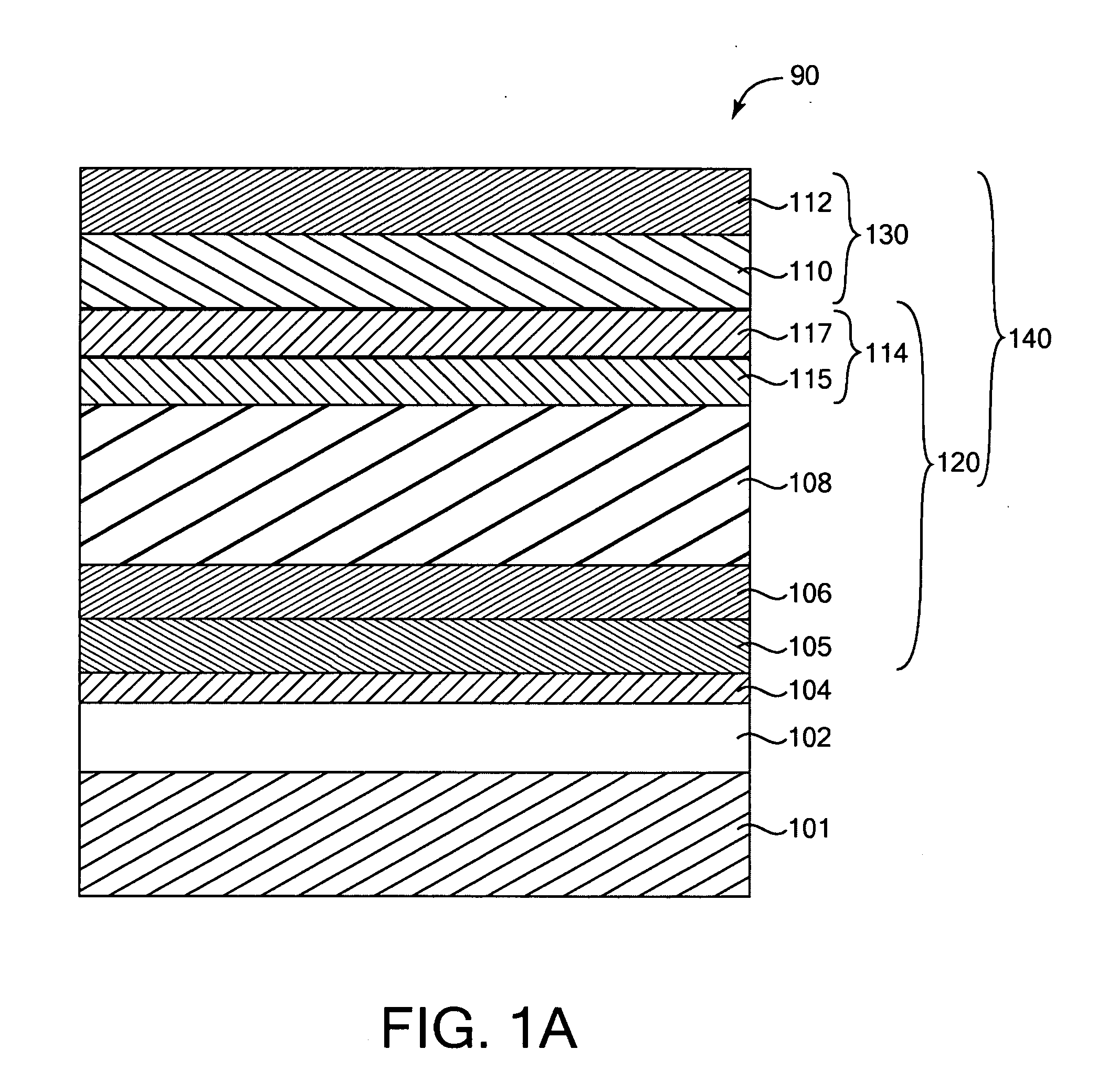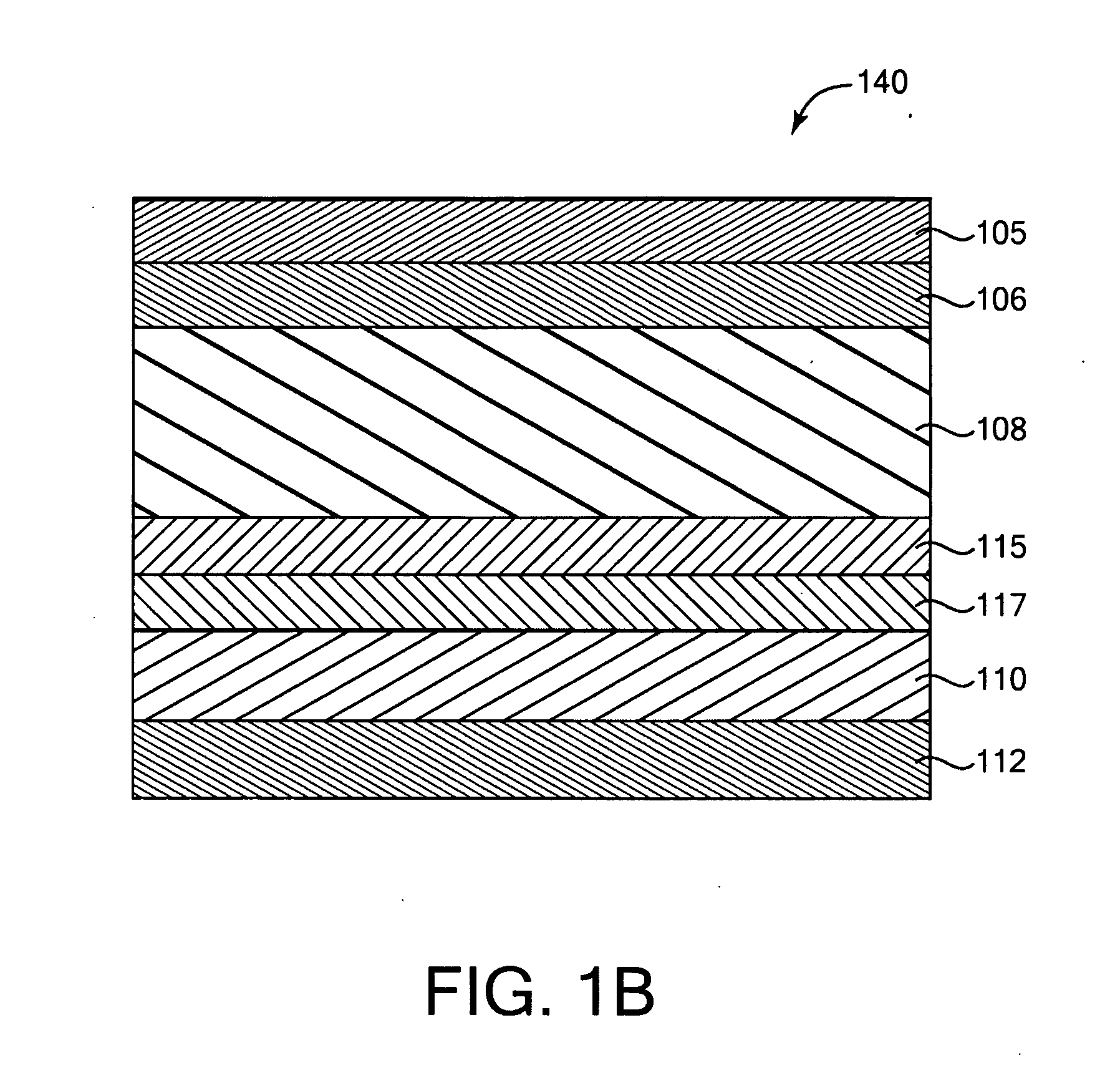Optoelectronic devices including heterojunction
a technology of heterojunction and optoelectronic devices, applied in the direction of semiconductor/solid-state device manufacturing, semiconductor devices, semiconductor devices, etc., can solve the problems of limiting the applications to which solar cells may be suited, preventing solar cells from becoming a mainstream energy source, and cost of producing solar cells, etc., to achieve higher bandgap, higher bandgap, and higher bandgap
- Summary
- Abstract
- Description
- Claims
- Application Information
AI Technical Summary
Benefits of technology
Problems solved by technology
Method used
Image
Examples
Embodiment Construction
[0018]Embodiments of the invention generally relate to optoelectronic semiconductor devices and processes including photovoltaic devices and processes, and more specifically relate to photovoltaic cells and the fabrication processes for forming such photovoltaic cells and metallic contacts. Some of the fabrication processes include epitaxially growing thin films of gallium arsenide materials which are further processed by an epitaxial lift off (ELO) process. Some embodiments of photovoltaic cells described herein provide a gallium arsenide based cell containing an n-type film stack disposed over a p-type film stack, such that the n-type film stack is facing the front or sun side while the p-type film stack is on the back side of the cell. In one embodiment, the photovoltaic cell is a two-sided photovoltaic cell and has an n-metal contact disposed on the front side while a p-metal contact is disposed on the back side of the cell. In another embodiment, the photovoltaic cell is a sing...
PUM
 Login to View More
Login to View More Abstract
Description
Claims
Application Information
 Login to View More
Login to View More - R&D
- Intellectual Property
- Life Sciences
- Materials
- Tech Scout
- Unparalleled Data Quality
- Higher Quality Content
- 60% Fewer Hallucinations
Browse by: Latest US Patents, China's latest patents, Technical Efficacy Thesaurus, Application Domain, Technology Topic, Popular Technical Reports.
© 2025 PatSnap. All rights reserved.Legal|Privacy policy|Modern Slavery Act Transparency Statement|Sitemap|About US| Contact US: help@patsnap.com



